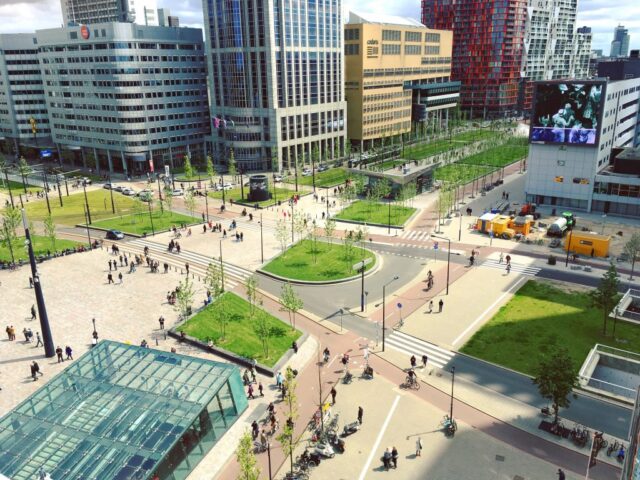
Collapsible bollards are a type of post used in urban areas to control traffic, maintain pedestrian safety, and enhance the aesthetic appeal of cities. They are designed to collapse or fold down when necessary.
These bollards have gained popularity in recent years because they provide an effective yet flexible method for organizing spaces in urban areas and ensuring pedestrian safety. These structures are now commonly seen in walkable cities where accessibility is prioritized.
Such cities are characterized by lower vehicle speeds, reduced traffic congestion, enhanced safety for pedestrians, and an increased sense of community. Consequently, understanding collapsible bollards and their role can provide valuable insights into the advancement of pedestrian-friendly urban areas.
How Collapsible Bollards Function
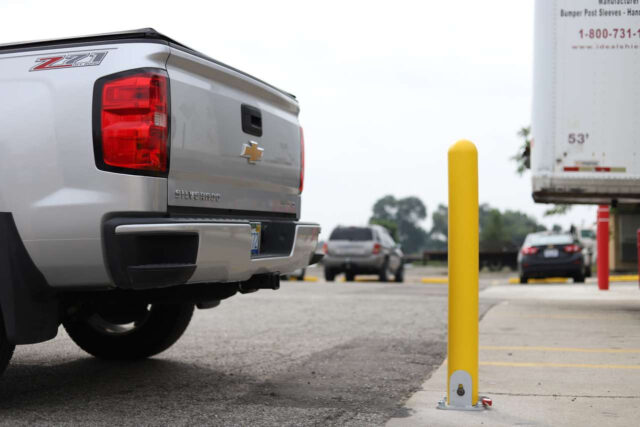
Collapsible bollards are sturdy yet flexible posts installed in strategic locations to control vehicular access while allowing free passage to pedestrians and cyclists. They are designed to be lowered or collapsed, usually under the weight of a vehicle, hence the name.
This unique feature allows them to be temporarily overridden, which can be particularly useful for emergency services or authorized vehicles needing access to restricted areas.
The mechanism of a collapsible bollard typically involves a locking device that keeps them standing erect when necessary. When a certain level of pressure is applied – as would be the case when driven over by an authorized vehicle – the lock can be disengaged, allowing the bollard to collapse or fold down.
There are different types of collapsible bollards available, including manual, semi-automatic, hydraulic, electric, and fully automatic models. The choice largely depends on the specific needs of the area where they’re installed. The use of different types offers a range of solutions for urban planning, each catered to specific contexts and needs. Materials can also differ with bollards to suit the environment they are situated in.
Shaping Urban Areas
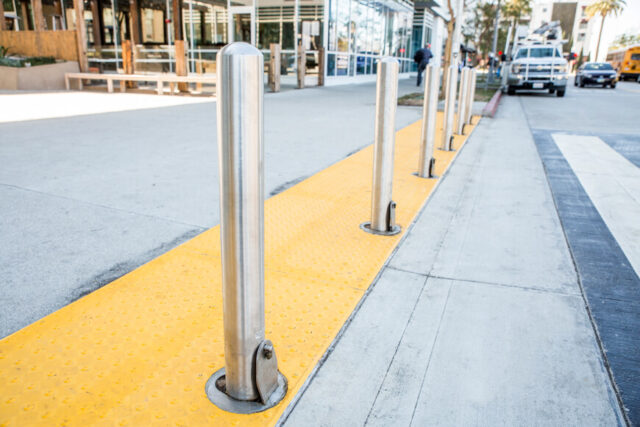
Collapsible bollards play an instrumental role in shaping urban areas into safe, pedestrian-friendly environments. Primarily, they act as barriers that control vehicular access, particularly in areas filled with people. Their firm yet flexible design allows them to withstand impact without causing significant damage to vehicles, thus enhancing public safety whilst being sympathetic to the driver and vehicle.
Bollards are also visual cues, signaling drivers to slow down in areas where pedestrians are plentiful. Additionally, their collapsible nature ensures easy access for emergency vehicles, thus seamlessly integrating safety and functionality.
Collapsible bollards also contribute significantly to urban design. Their sleek and modern appearance can enhance the aesthetic appeal of city streets while maintaining their practical functionality. They help demarcate pedestrian zones, bike lanes, and other restricted areas in a visually pleasing manner, aiding not just in traffic control but in defining urban areas as well. By allowing cities to control traffic and protect pedestrians, collapsible bollards indirectly promote societal values of shared spaces and communal safety.
One notable example of collapsible bollards usage is in London, where authorities have strategically placed them across the city to reinforce pedestrian zones. These installations are particularly evident in areas with a high concentration of pedestrians such as shopping districts and around historic sights.
Another case is New York City, where collapsible bollards are used extensively in bike lanes and pedestrian zones. These structures serve as a clear delineation, protecting cyclists and pedestrians from traffic, and also effectively slow down vehicles in these areas.
The city’s adoption of collapsible bollards played a significant part in its efforts to become more pedestrian and cyclist-friendly, leading to a more diverse and inclusive urban transport infrastructure.
Using Bollards to Make Urban Spaces Pedestrian-Friendly
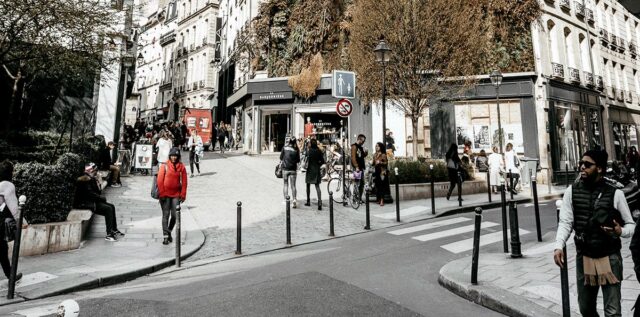
Collapsible bollards have significantly impacted the development and facilitation of pedestrian-friendly urban areas. By controlling vehicle access and reducing speeds in designated areas, bollards create contained, safe spaces for individuals to walk or cycle without concern for traffic interference.
This promotes a culture of active transportation and health, encouraging individuals to opt for walking or cycling as a means of transit instead of motorized vehicles.
Apart from their practical function, a collapsible bollard also contributes to the aesthetic appeal and layout of urban areas, thereby enhancing the overall pedestrian experience. They create distinct spaces and boundaries in an otherwise bustling and chaotic urban setting.
Their design subtly discourages aggressive or high-speed driving, thus creating a safer environment. Just a few rows of bollards can significantly decrease vehicle speeds, making the roads safer not just for pedestrians but also for drivers and cyclists.
The Future Of Urban Planning
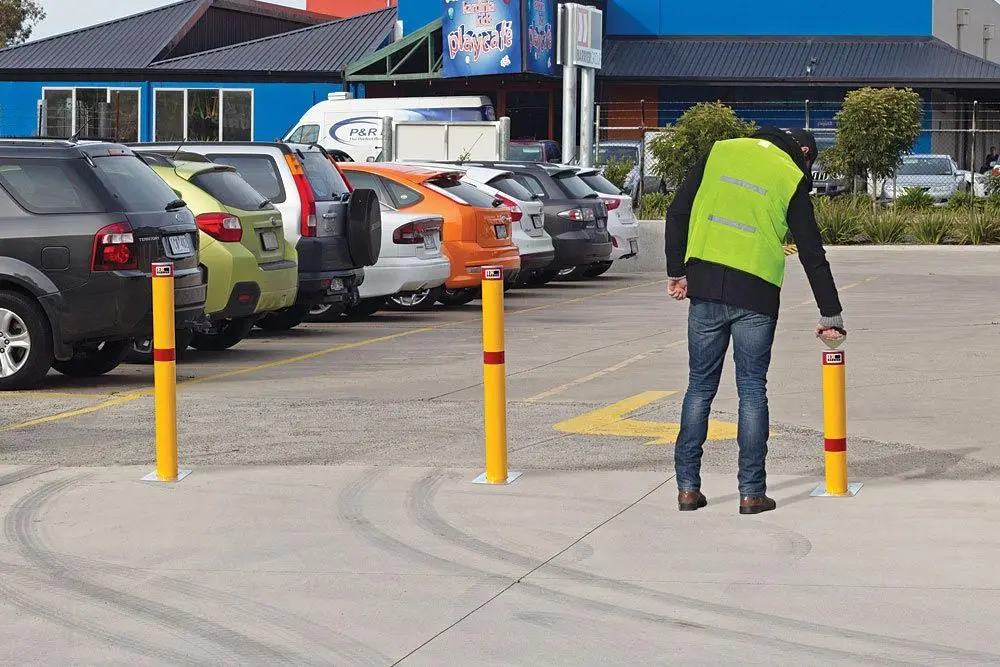
Collapsible bollards are likely to play an increasingly important role in promoting sustainable urban development. As cities continue to grow and battle issues such as traffic congestion and air pollution, collapsible bollards can help to reorient urban areas towards more sustainable and health-friendly modes of transportation.
By facilitating pedestrian and cyclist-friendly spaces, bollards directly promote active transportation, resulting in decreased usage of motor vehicles, reduced greenhouse gas emissions, and healthier, more active populations.
Technological advancements will also amplify the design and functionality of collapsible bollards significantly. Engineers are experimenting with new materials and designs to make bollards more effective, durable, and pleasing to the eye. There is also potential for integrating collapsible bollards with smart city technologies.
For instance, automatic collapsible bollards that can be controlled remotely or integrated with traffic management systems can further enhance their functionality and effectiveness in managing urban traffic. This could ultimately result in safer, more efficient, and accessible urban areas for pedestrians.
Collapsible bollards have emerged as a versatile solution for creating and maintaining pedestrian-friendly urban areas. They have proven instrumental in promoting a more pedestrian-centric approach to urban planning.
Collapsible bollards will continue to hold great relevance as urban areas change and the importance of pedestrian-friendly design increasingly comes to the fore. With technological advancements and a growing emphasis on sustainable urban development, the role of collapsible bollards looks set to expand even further.
They represent an effective tool to guide urban growth and development in a way that prioritizes the safety, convenience, and aesthetic experience of pedestrians.







